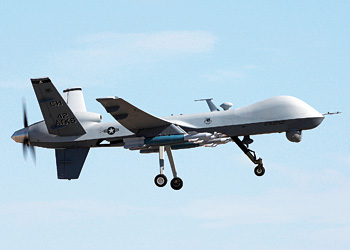INDIAN ARMED FORCES CHIEFS ON OUR RELENTLESS AND FOCUSED PUBLISHING EFFORTS

The insightful articles, inspiring narrations and analytical perspectives presented by the Editorial Team, establish an alluring connect with the reader. My compliments and best wishes to SP Guide Publications.

"Over the past 60 years, the growth of SP Guide Publications has mirrored the rising stature of Indian Navy. Its well-researched and informative magazines on Defence and Aerospace sector have served to shape an educated opinion of our military personnel, policy makers and the public alike. I wish SP's Publication team continued success, fair winds and following seas in all future endeavour!"

Since, its inception in 1964, SP Guide Publications has consistently demonstrated commitment to high-quality journalism in the aerospace and defence sectors, earning a well-deserved reputation as Asia's largest media house in this domain. I wish SP Guide Publications continued success in its pursuit of excellence.
- Indian Air Force Aims for Full Indigenous Inventory by 2047 — Air Chief Marshal A.P. Singh
- General Upendra Dwivedi takes over as the Chief of the Army Staff
- Rajnath Singh assumes charge as Defence Minister for the second consecutive term
- Admiral Dinesh K. Tripathi assumes Command of the Indian Navy as 26th Chief of the Naval Staff
- Prime Minister witnesses 'Bharat Shakti' – a Tri-Services Firing and Manoeuvre Exercise in Pokhran, Rajasthan
UAV market to grow mostly in Europe, Asia

Unmanned aerial vehicles (UAVs), or drones, have repeatedly proved their worth in recent conflicts. Drones have certain inherent advantages over manned platforms, motivating the interest of military forces and driving the market for military drones. Despite projections for a substantial increase in spending on UAVs, reduced military expenditure by the United States is causing uncertainty among industry stakeholders.
New analysis from Frost & Sullivan, military unmanned aerial systems market assessment, finds that total market revenue is likely to be $61.37 billion across the forecast period 2011-20. It is estimated that the global military unmanned aerial systems (UAS) market generated $4.55 billion in revenues in 2010, a figure that is set to rise to $7.31 billion in 2020.
“The United States will reduce its spending on UAS as it is adequately equipped to meet its needs,” notes Frost & Sullivan Senior Research Analyst, Mahendran Arjunraja. “Although the country has plans to increase its inventory by more than 35 per cent over the next ten years, market revenues are expected to decline at least till 2020; the US military UAS space is undergoing a transition from procurements to sustainment with most future procurements likely to be limited to upgrades.”
At the same time, Europe is facing intense competition in the medium-altitude, long-endurance (MALE) UAV segment, as more domestic companies are collaborating to develop indigenous equipment. Existing high altitude, long-endurance (HALE) UAVs are too expensive for many nations, even while MALE equipment has limited capability. Hence, an opportunity exists for equipment with capabilities between MALE and HALE.
As the operations in Afghanistan are expected to reach an end soon, governments are unlikely to show keen interest in renewing lease agreements. This will have an immediate impact on UAV leasing companies. However, this restraint is set to become a driver in the long-term, as cash-strapped countries would be able to allocate resources for equipment procurement.
“Reduction in spending by the United States is expected to slow down the UAS market,” cautions Arjunraja. “Fortuitously for market participants, this slowdown will be partly off-set by the growth in the European and Asian markets.”
The military UAV market in Europe and Asia will witness significant growth in the next ten years. This is the opportune time for UAV manufacturers and suppliers, therefore, to explore opportunities in these emerging markets.





